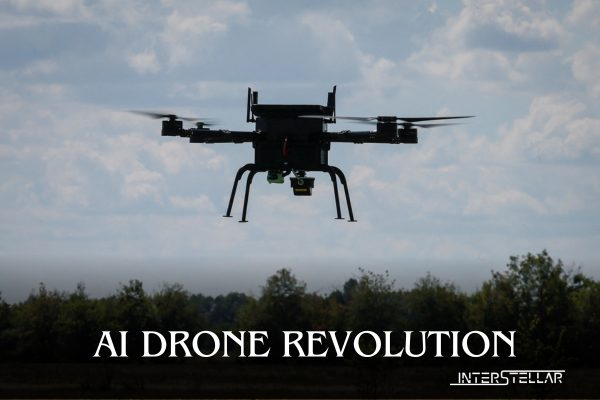Ukraine’s AI-Driven Drones: A Game Changer in Modern Warfare
Revolutionising Drone Warfare with AI
In Ukraine, a new wave of startups is creating Artificial Intelligence (AI) systems to manage a vast fleet of drones. This technological advancement is pushing warfare into uncharted territory, as combatants strive to gain a technological edge. Ukraine aims to deploy AI-enabled drones along the front line to counter increasing signal jamming by Russian forces and enable unmanned aerial vehicles (UAVs) to operate in larger groups.
The Role of AI in Drone Operations
AI drone development in Ukraine focuses on three main areas: visual systems for target identification, terrain mapping for navigation, and complex programmes enabling UAVs to function in interconnected “swarms.” One notable company, Swarmer, is developing software to link drones in a network. This allows decisions to be executed instantly across the group, with human intervention required only to approve automated strikes.
Swarmer’s CEO, Serhiy Kupriienko, highlighted the limitations of human pilots in scaling up operations. “For a swarm of 10 or 20 drones or robots, it’s virtually impossible for humans to manage them,” he said. The company’s system, called Styx, directs a web of reconnaissance and strike drones, both large and small, in the air and on the ground. Each drone can plan its moves and predict the behaviour of the others in the swarm.
Addressing Signal Jamming and Enhancing Efficiency
The necessity for AI-enabled drones is growing as both sides use Electronic Warfare (EW) systems to disrupt signals between pilots and drones. Small, inexpensive FPV (first person view) drones, which became the primary method for both sides to target enemy vehicles in 2023, are experiencing reduced hit rates due to increased jamming.
Max Makarchuk, the AI lead for Brave1, a defence tech accelerator set up by the Ukrainian government, pointed out the declining effectiveness of FPV drones. “Most FPV units now see a strike rate of 30-50%, while for new pilots that can be as low as 10%,” he said. Makarchuk predicts that AI-operated FPV drones could achieve hit rates of around 80%.
To counter the EW threat, developers like Swarmer are creating functions that allow a drone to lock onto a target through its camera. Automating the final part of a drone’s flight to its target means it no longer needs the pilot, thus nullifying the effect of EW’s jamming.
Ethical Considerations and Cost Efficiency
While the advancement of AI in drone warfare presents significant strategic advantages, it also raises ethical concerns. Systems that operate without human judgement could potentially violate international humanitarian laws. A 2020 European Parliament research paper warned that such systems might lower the threshold for going to war.
Despite these concerns, AI-enabled drones are already in use in Ukraine’s long-range drone strikes, targeting military facilities and oil refineries deep inside Russia. One Ukrainian official noted that these attacks sometimes involve a swarm of about 20 drones, with core drones targeting the objective and others distracting air defences.
Producing an AI targeting system for drones that is cost-effective remains a crucial task for Ukrainian manufacturers. Running AI programmes on inexpensive computers like the Raspberry Pi has been a strategy to reduce costs. Makarchuk estimates the cost of implementing a simple targeting system, which would lock onto a shape visible to the drone’s camera, at about $150 per drone.





